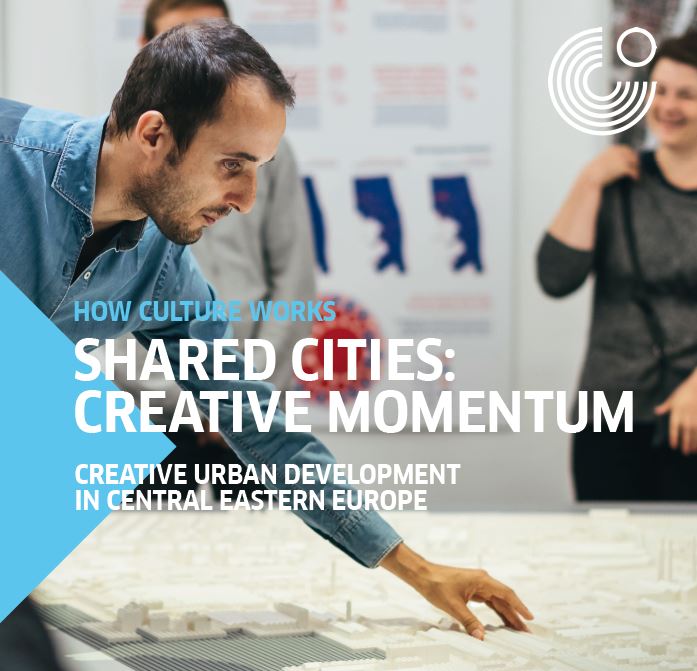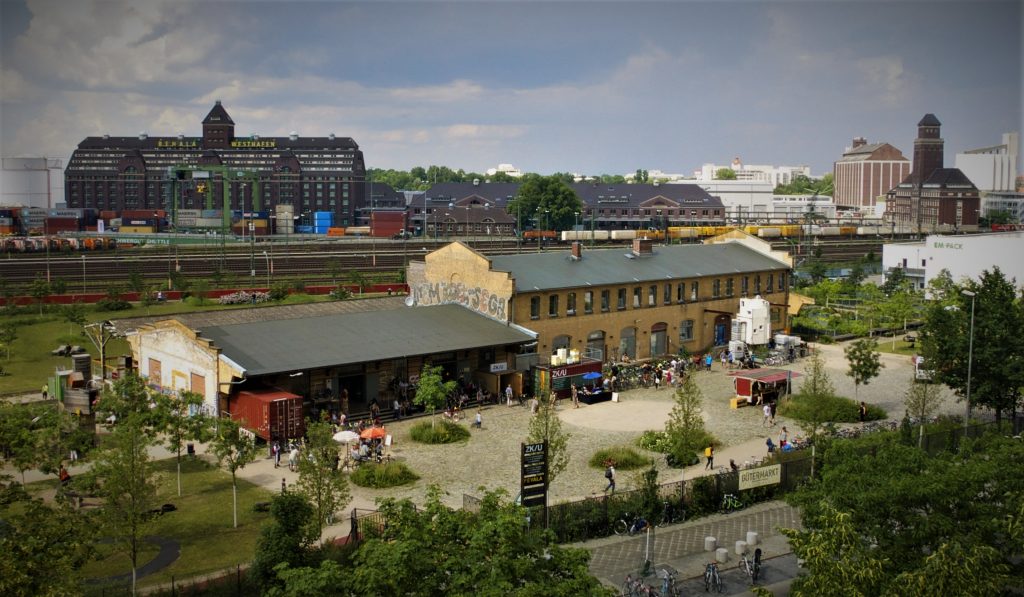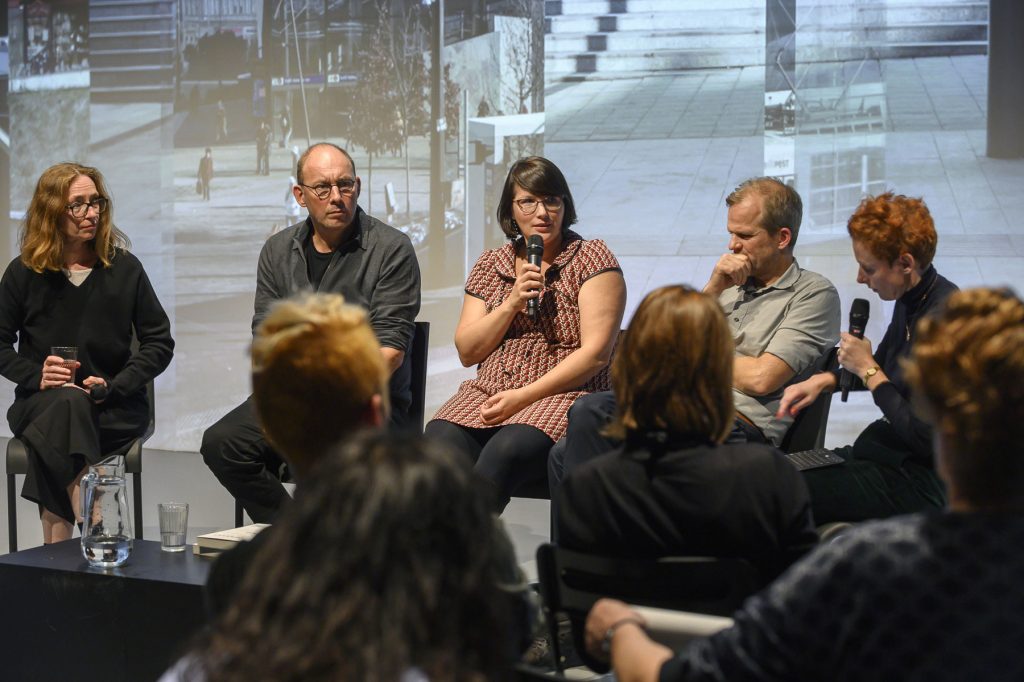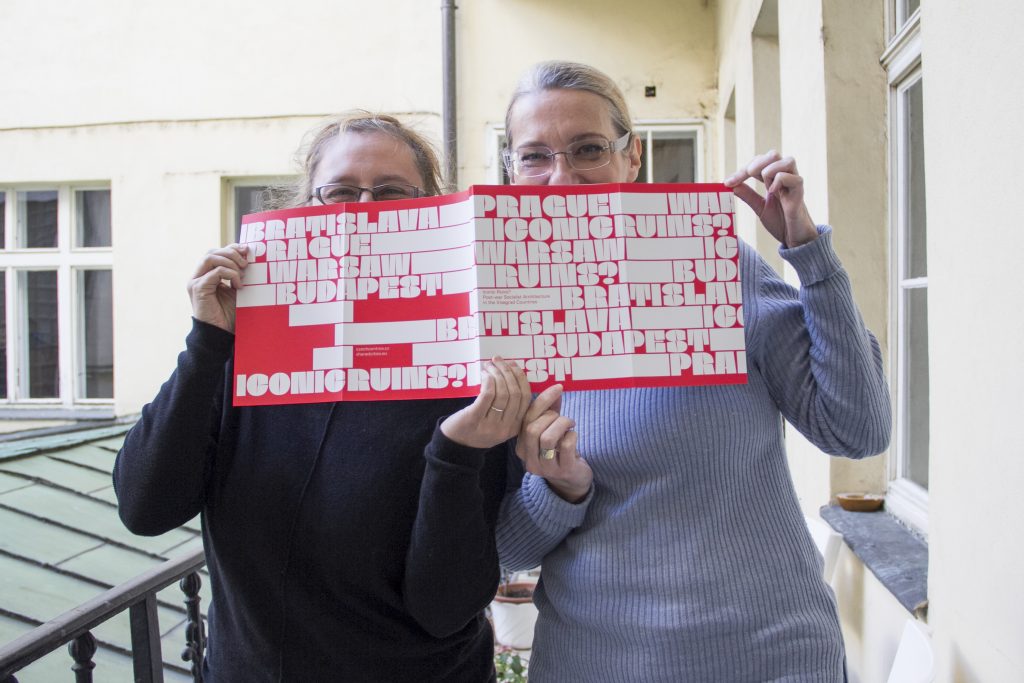
How Culture Works
"DOES EVERYTHING ALWAYS HAVE TO BE ASSESSED?" No. But when cultural work is financed with public funds, there is a necessity to evaluate.
Prague Permanent linkFour years ago, my good friend Marjetica Potrc took me to ZK/U, Center for Art and Urbanism in Berlin. We got out of the S-Bahn and walked along the street with the faceless residential houses with the backyard oriented to the waste railway corridor. In the distance, behind the rails, we could see mystical silhouettes of huge storages of Westahaven. It was during sunset and this entire scene made up of suburban irrelevancies and naked infrastructures that transformed into uncanny romance...

(c) ZK/U Berlin
There was nothing that I could remember on the streets. Marjetica was telling me about Arne Brandlhuber and his students from the nomadic master program whose discussion we were going to attend. Without any big expectations, we found ourselves in the courtyard in front of something that looked like a railway depot. Inside there was a large hall that kept its original workshop form, robust and raw, with some chairs and tables scattered in the darkness, few microphone stools, and a bar in the corner. It seemed that the whole space could be changed in a minute into something else. Everything started to look different when people started to fill the empty stage ??? dirty walls got enlightened and dark corners became alive. The fact that the presence of the people had such a strong effect that could transform the space was a sign that there is something more than conventional architectural thinking behind the loose spatial organization. Marjetica explained to me that the founders of ZK/U were three artists who took art as a way of living in the city rather than a way of making object that reflects it.
The discussion was developed by thoughtful minds. It was about the difference of governing and living in the city. In a very dialectical manner, the government was considered a homogeneous political body which makes and manage rules for people, while people were considered a heterogeneous group with conflicted interests who tend to constantly deregulate governmental directives. The discussion was dense and intensive and I did not have a chance to express my opinion, but I still remember how many remarks I had against this exclusive dichotomy. It was understandable from the point of view of a regulated state where rules and behaviors are in harmony, but from the point of view from someone with the experience of the collapse of regulated state this determination was too rigid. In a critical conditions power of surviving tend to overcome governmental power which than tend to transform into equally heterogeneous and conflicted realm. The governmental body became deregulated, corrupted, and manipulated. It change the way it manifested power: instead of its centralized authority, power becomes invisible and dispersed, instead of dominating presence it appears as network of micro power points distributed in all scales and in every moment.
Although I did not bring up my points during the discussion, when it was finished I went to the bar to get a beer. This is where I stumbled upon one of the guys that participated in the discussions with me. He was a Lebanese architect and the author of ???Quantum Theory of Architecture,??? a book I was reading at the time. We shared the same opinion about the relationship between urban management and urban life since we both experienced civil wars in our countries and the deregulation of the state. We both were looking for understanding beyond dialectic divisions ??? toward conditions in which potentials dominate over prescribed solutions. We both changed our thoughts about the city and its people after the experience of war and we were both looking for the relevant knowledge about urban development beyond the borders of architecture and urbanism as disciplines which rules were taken for granted. For both of us, an individuals power to destroy and to recreate urban space, without previous plans, was fascinating. We both started to think about the structure of Informality as a model of sustainable development, and there we found each other, in an informal space, at the bar next to the discussion place in ZK/U.
I got the chance to meet the people who created ZK/U four years later as partners in the network created by the Shared Cities project manager. I did not realize, until Miodrag, an architect from ZK/U, told me, that I was already at the stop that they wanted to meet up. I liked that place before I started to know the people who made it.
It was a cold and dark January evening when I went to ZK/U for the second time to meet Matthias, Philip and Miodrag. It was, one of those days that you didn???t want to spend outside more than you had too. Inside, in a warm and friendly atmosphere, we had spontaneous and inspiring conversations for hours. Although this was the first time we met, it seemed that??we knew each other our entire lives. We talked about cities, politics, sharing, marxism, and their meaning today and how to implement our knowledge in real life. They also did not know much about other partners and that gave us an idea to organize an event in Belgrade, where we could start talking to each other and learning from our experiences before formulating any common agenda.
Besides, I learned the story about ZK/U and how it was founded. It seemed to me that this kind of cultural entrepreneurship is possible only in Berlin where the city government has been open to experiments in city management. Other cities governments do not like to risk in changing management routine because people who are sitting in government might stay without their privileges when changing happen. They would rather keep the secure position of ruler which entitles them to play power games than to become visionaries.
KUNSTrePUBLIK was somehow lucky to find open minded correspondents in the government who were willing to read their proposal for the new model of artistic engagement that was orientated toward urban development and providing support for the start-up of new cultural organization in the abandoned and ruined railway workshop. By doing so, the city government decided to delegate its centralized authority to a group of citizens and to share responsibility for urban redevelopment. Someone decided that citizens’ initiatives should get an opportunity to take care about the city as equal participants in public space. Someone in the city government decided to make a real experiment of democratization of urban management which represents a source of a political authority and a way to demonstrate governmental power. To go back to the discussion that was elaborated in the beginning of this text, someone in the government decided to recognize heterogeneity over homogeneity, humanization over institutionalization, life over prescribed rules, informality over state apparatus.
Both Marx and Friedman were dreaming about dethronization of the state authorities as a condition for the final deliberation of individuals and it seemed to me that KUNSTrePUBLIK was the first step towards this envisioned freedom. State dethronization, however, could not happen without new commitments for KUNSTrePUBLIK. They had to take over the duties that were deliberated by the government. They had the ruined building that they had to renew, they had the wasted space that they had to transform into living place. Moreover, they were committed to maintaining it for the long haul, and for that reason they would have to stay in the same place for several days and nights. They will have to run their program activities continuously, and all these activities are dedicated toward bringing people together to take care about the city. In the long run, these activities would empower the people to transform their city into urban commons. KUNSTrePUBLIK had a lifetime opportunity that demanded the highest dedication, and as such, shapes the lives of its founders ??? lives that became the art of living.
Ivan Kucina, Association of Belgrade Architects (ABA)

"DOES EVERYTHING ALWAYS HAVE TO BE ASSESSED?" No. But when cultural work is financed with public funds, there is a necessity to evaluate.
Prague Permanent link
The one-day programme was based on discussion formats with renowned European architecture theorists, curators and urban researchers.
Prague Permanent link
Within Shared Cities: Creative Momentum the Czech Centres realized the "Iconic Ruins?" exhibition and an economic impact evaluation of the project. How does the future of the exhibition look like? What are the benefits of having an economic analysis of the project? Find the answers in the interview with Ivana ??ern?? and Sandra Kar??csony from the Czech Centres / ??esk?? Centra in Prague, Czech Republic.
Prague Permanent link